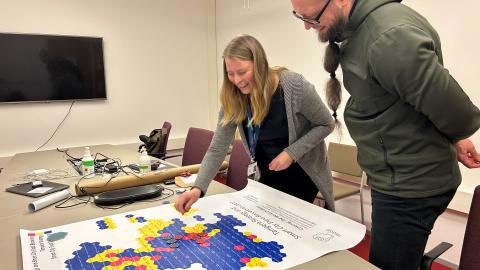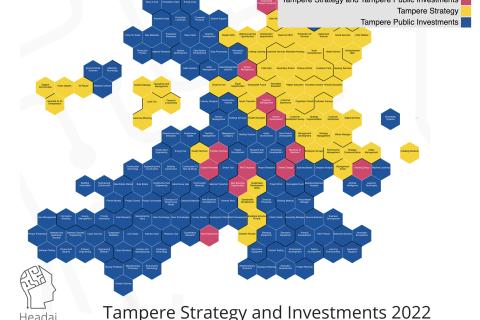Tampere Utilizing Latest Smart Technologies to Map Future Skill Needs

–While ChatGPT generates new text, our HeadAi AI creates data visualizations. It could be said that this is like a visualizing ChatGPT: our AI is asked a question, for which the program seeks an answer from numerous sources. Once the tool has extracted information from the data sets, it generates concept maps for us. These maps can be used, for example, as tools in employment services when searching for suitable skill profiles, notes Anu Passi-Rauste, CMO of HeadAi.
–Our tool brings together various data sources and distills the accurate information from them, adds Harri Ketamo, Founder of HeadAi.
Digitalization brings new opportunities for city service development, and one of these opportunities lies in leveraging data that describes the city's skills.
–It's important that decision-making is based on up-to-date and reliable information. As an organization, we want to innovate and enable an intelligent city by working together and learning. From the perspective of skills and development, we set out to determine the kind of expertise a smart city like Tampere needs and the kind of expertise the city already possesses in relation to this need, says Riikka Lindsten, Development Specialist at the City of Tampere.

Data helps identify the types of actions and skills needed in the city organization
In the City of Tampere’s Data-Driven City for Citizens development programme, methods are being sought to utilize data and technologies to improve services for both people and businesses. An intelligent city organization must be capable of learning and adapting. Tampere collaborates with HeadAi to support the city's renewal, enabling the identification of needs for potential new roles and the formulation of measures to enhance skills in areas where they are required.
–With concept maps, we can find out what kind of activities and experts are required beneath the surface of intelligent Tampere, summarizes Ketamo.
This involves enhancing skills, intelligent services, and their prerequisites.
Assessing capabilities with AI is a fresh perspective in international smart city development
Although AI discussions are currently prominent in urban development, the assessment of capabilities using AI is a novel perspective in international smart city development.
–In international smart city events, such as the Smart City Expo & Conference in Barcelona, the extensive use of AI in urban logistics solutions was highlighted. However, the perspective of assessing capabilities through AI is novel, explains Passi-Rauste.
–New innovations are emerging rapidly, and amidst this, we need to ensure that we have capable individuals to build complex structures and ensure adaptability. This is precisely the challenge we are solving together, reflect Lindsten and Passi-Rauste.
Tampere's collaboration with HeadAi has yielded two concept maps, providing insights into required capabilities and the future direction - where the city aims to go.
–Concept maps allow us to monitor progress, understand the current situation, identify areas for future focus, and link these aspects to the city's strategy, describes Ketamo.
In the future, AI will bring more opportunities, but the primary responsibility lies with humans
Ketamo reminds us that AI is not intended to replace humans.
–AI models must always return to the source of the data. The question is what we can learn from the data. For example, job advertisements may not fully depict the region's actual skill situation or needs. It's up to humans to determine how to utilize this information, Ketamo states.
–Through data and its visualization, we engaged in discussions and developed a common understanding of what aspects we need to consider and what areas we should examine more closely within our organization. The learning process brought us insights and combined valuable knowledge. This lays the foundation for supporting renewal and skills. I'm eagerly awaiting what the future holds; what kinds of intelligent technologies and innovative solutions we will further utilize, Lindsten concludes.
For more information:
Riikka Lindsten
Tampereen kaupunki
Kehittämisasiantuntija
[email protected]
0407264097
Anu Passi-Rauste
HeadAi
Markkinointijohtaja
[email protected]
040 5081130